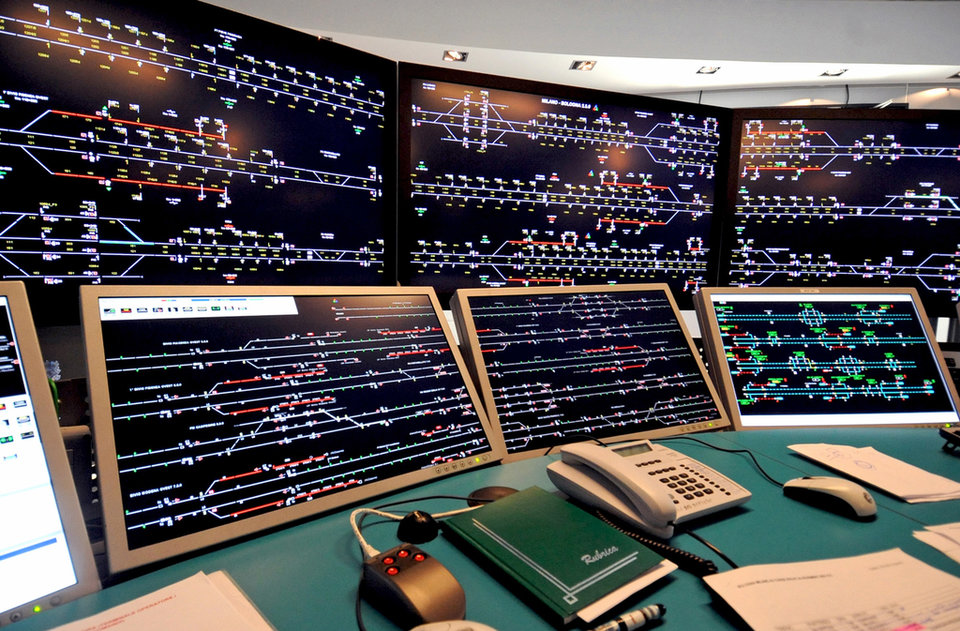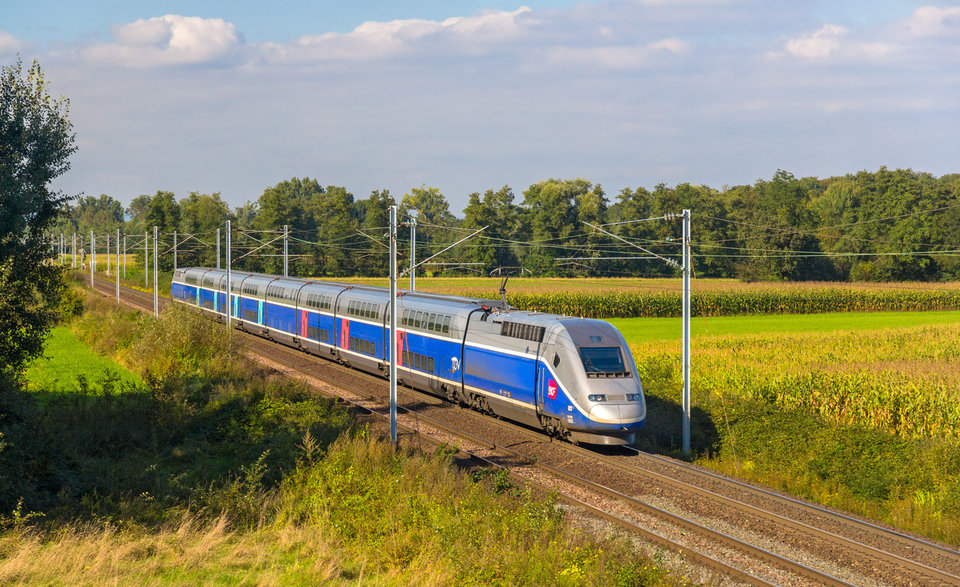The accident in Italy is being analysed from the perspective of human-errors at the front of maintenance operators
A rail network can never be completely safe
As Seetha Ram and his research associate Nikhil Bugalia explain, the first assumption should always be that a rail system can never be safe enough.
Both of them recently contributed to the redaction of a paper called ‘Handbook on high-speed rail and quality of life’. “A railway organisation’s pursuit of safety should never stop,” the handbook reads. “For complex socio-technical systems such as railways, safety should be achieved through harmonised coordination between robust technology and qualified personnel.”

The derailment of a Frecciarossa high-speed train in northern Italy in early February killed two and injured dozens of others. Image: Pierre Teyssot | Shutterstock.com
In this sense, Seetha Ram says, high-speed trains could be compared to computer systems, which are constantly updated based on bugs and other malfunctions. “But because the [number of] fatal accidents which resulted in a derailment or stopping of the train are [so rare] there are many other layers of avoidable or avoided and less tragic accidents which actually offer lessons and that is how the software gets updated.”
While investigations in Italy were recently brought to a halt as a result of the coronavirus pandemic, early conclusions on the Frecciarossa accident seem to point that ‘human error’ (allegedly some technicians’ wrong display of tracks) could have caused the derailment.
“The accident in Italy is being analysed from the perspective of human-errors at the front of maintenance operators,” says Bugalia, who recently completed a PhD dissertation on safety management practices among Japan’s high-speed rail (HSR) operators. “However, since the accidents in HSR systems are infrequent, they must be investigated thoroughly and comprehensively to get the most learning from a single unfortunate event. Thorough investigations may be expensive and time-consuming but these accidents are rare opportunities to learn, so the use of more resources could be warranted.”
Human errors and the ‘irony of automation’
A key takeaway from the accident is that the role of human intervention and the extent to which it should be held accountable when it comes to safety.
Human error may have been identified as the reason behind the accident in northern Italy, yet as Bugalia maintains, “the state-of-the-art safety approaches all consider human error not as the ultimate cause of the accident, but a symptom of underlying factors that need to be addressed”. These can include “dysfunctional interaction” between operator and technology, as well as “organisational processes, practices and culture that may negatively influence human behaviour and jeopardise safety”.

The central control room for the Frecciarossa high speed rail network in November 2007. Image: Paolo Bona | Shutterstock.com
While human operators still play a substantial role in handling traditional systems, their employment in HSR systems is gradually decreasing. “As the speed of the trains has increased, a necessity for the enhanced control is thought necessary for which human operators may face certain limitations,” Bugalia continues. “Hence, all HSR systems have relied on advanced and more sophisticated technical systems to support the role of human operators such that safety can be achieved even at higher speeds.”
This growing reliance on technology to provide safety is resulting in what Bugalia describes as the “irony of automation”. “Because of the changing role of human operators, the onus of safety has shifted up the hierarchy and now lies at the organisations (read top-managers) to design and operate systems that can operate safely,” he explains.
Yet as Seetha Ram says, this doesn’t necessarily result in safer services: “Less of the human role doesn't mean [the system is] infallible. It means you have to be even more careful.”
All HSR systems have relied on advanced and more sophisticated technical systems
With increasing rainfalls, typhoons, and erratic weather patterns the HSR systems will have to be further developed
The role of external factors
Although not decisive in Frecciarossa’s derailment, external factors like adverse weather and natural disasters are an increasingly tougher challenge for HSR operators as climate change tightens its grip over the world.
A case in point, earlier in March a TGV train derailed in southern France as a result of a landslide, leaving over 20 injured. The latest of an ever-increasing list, France’s accident is symptomatic of networks’ constant exposure to unpredictable natural events and a higher degree of risk.
Some networks are already investing heavily in the development of resilience and prevention measures. A prime example is the upcoming Rail Baltica line, which will connect Latvia, Estonia and Lithuania. With operations set to start in 2026, engineers working on its development recently published a study assessing the impacts of expected climate variations on the upcoming line.

Caption: Early in March, a TGV train derailed in southern France as a result of a landslide. Image: Leonid Andronov | Shutterstock.com
Meanwhile, Bugalia points out that many existing networks have already adapted to cope with risks. Japan has long been a pioneer in this field, finding itself located in a rather unwelcoming land where earthquakes are frequent and difficult to tackle.
Here, measures to prevent accidents include emergency braking systems and trackside signals that can detect obstruction. “Although such external factors pose [a] high risk, the HSR systems have been strengthened to mitigate the risks to certain extents,” says Bugalia. “Nevertheless, with increasing rainfalls, typhoons, and erratic weather patterns the HSR systems will have to be further developed.”
Overall, much of this resilience is owed to technology, which allows operators to promptly integrate updates within a train’s computer model. “Today, we're able to simulate a near real-world situation in a computer model,” says Seetha Ram. “And the simulation is not only just for designing but also for training the drivers. So high-speed rail drivers are trained on a simulator before they actually use the real vehicle,” he continues, adding that this training is now more sophisticated and potentially effective.
Increased collaboration key for upcoming lines
The success of high-speed rail networks is spurring new projects around the world, with countries across America, Europe and Asia all putting forward their own ambitious plans.
Looking back at the good and bad examples set by existing networks, a lot can be learned as far as construction and operation are concerned. On the building front, encouraging efforts are being made in Europe where authorities have been pushing forward the concept of interoperability, which allows for cost reduction, increased safety and uninterrupted movement of trains.
As for operations, Japan’s model can be an example to many. Here, the country’s world-famous high-speed trains are operated by different companies, all handling a portion of tracks. Equally, different companies are responsible only for training their drivers and guaranteeing safety on their part of the line.
“Those organisational arrangements are very important,” concludes Seetha Ram. “They go beyond technology and this is where the soft side of the human aspect comes. It's one thing to have the rules and the other thing is to share the responsibility and [share lessons].”
Seetha Ram says that his views do not represent the policies of ADB or its member countries.
It's one thing to have the rules and the other thing is to share the responsibility and [share lessons